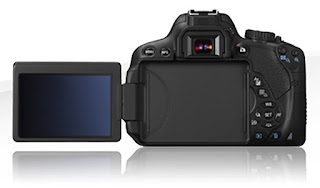In the previous post to that (see here) I wrote about why I was even getting a new lens in the first place, and about swapping back to Canon after using an Olympus micro four thirds system for the last two years. I had a wedding coming up, and just a week out from the big event, I was prompted (literally) to trade in all my gear and move back to a DSLR kit.
Of course the most important component of any camera system is.... the lens (shame on you if you said camera body). Shooting a wedding is a one-off event. So I wanted to know that the gear was going to stand up to the pressure of the day, and perform. The Canon 50D is a known entity - I've owned and used all the mid-range Canon DLSR's from the 10D upwards to the 50D, and used them on many weddings. And, of course, I took two 50D bodies with me on the wedding day, so that I would have back-up if one failed (it didn't).
The Sigma 17-50mm f2.8 however, isn't a lens I've ever used - and except for a couple of quick snaps in my lounge, I wasn't going to have time to really test it out before the wedding day. Scary stuff (and not something I advise to be honest).
 |
| Blue eyes. Sigma 17-50mm. 1/60th @ f2.8, ISO 1000 |
You don't get a constant aperture f2.8 lens to shoot it at f8 all day, especially when light levels are low - so for most of the wedding day I shot the Sigma wide open at f2.8 (or there abouts). From the very first image the results were spectacular! Look at the image on the right, shot wide open at f2.8. The front eye (that I focused on and recomposed) is razor sharp and the background blur (bokeh) is smooth and creamy. This is one of the first images I took on the wedding day, and a quick check by magnifying the image on the rear lcd screen of the camera confirmed that the Sigma/Canon combination had nailed focus. I was very happy, and this one image gave me the confidence to shoot the Sigma wide-open for the rest of the day and not worry about sharpness.
I did get a few slightly unsharp shots mixed in with the rest during the day, but I'm quite happy to put that down completely to user-error and not the fault of the equipment, which worked flawlessly.
 |
| Make it Quick! 50D with Sigma 17-50mm f2.8 OS. 1/25th @ f8, ISO 1000 |
What the photo does demonstrate is the Sigma's corner sharpness, at 17mm, with an f8 aperture. This is ideal landscape photography territory (I'm a landscape photographer first and foremost after all), and the result is very pleasing. Very good extreme corner edge sharpness, and very sharp overall - considering the shutter speed of only 1/25th sec! The OS (optical stabilisation) system is really proving its worth in this image, and is smooth and quiet in operation (unlike Tamron's noisy and clunky VC implementation). As with all wide angle zoom settings, there is some edge distortion, but this is to be expected and probably easily corrected for in post. Besides, the Sigma probably won't be my 'go to' landscape lens - I have the Canon 10-22mm ultra-wide for that (which, as an ultra-wide, also has a lot of distortion).
 |
| Jess. Sigma 17-50mm f2.8. 1/80th @ f2.8, ISO 200 |
The body is manufactured from high quality polycarbonate plastic, with a metal lens mount and all-glass lens elements. These include two FD elements (similar to flourite) as well as Aspherical moulded lenses to correct for abberations - which they seem to do admirably. My copy is tightly constructed, with no obvious seems or joins, wobbles or creaks. As other reviewers have mentioned, there is a slight 'rattle' from the lens if it is shaken (don't shake the lens) that comes from the OS system. This is normal, and is consistent with other Sigma products. I had a Sigma 60mm f2.8 OS telephoto for my Olympus micro four thirds that rattled like a baby's toy, but performance was excellent.
At 77mm, the front element is rather large, which unfortunately means big $$ for filters. But I already had a 77mm UV for the Canon 10-22mm, and the camera store threw in a 77mm Polariser to make up the price difference with the Tamron I had purchased, so I've come away with the filters I need anyway.
 |
| Trav & Jess, Rapahoe. Canon 50D with Sigma 17-50mm f2.8. 1/200th @ f3.5, ISO 200. Canon 430EX III flash |
I'm aware that people talk about copy variance with third-party lenses. Some Sigma's (and Tokina's and Tamron's) have been known to suffer from back or front focusing issues so that images don't come out sharply focused on the intended area. I must have a good copy, because I'm not seeing any focusing issues that would cause me concern. It also seems that maybe Sigma have 'uped' their quality control game over the years? Their 'Art' series lenses are getting amazing reviews - for build quality and IQ, although so they should, since they come at a premium.
The next lens I'm actually interested in is the Sigma 50mm f1.4 HSM DG. Again, it gets great reviews for sharpness and build quality - even surpassing the Canon 50mm f1.4. We have one of these where I work, so I can feel a 50mm lens comparison test coming on...











